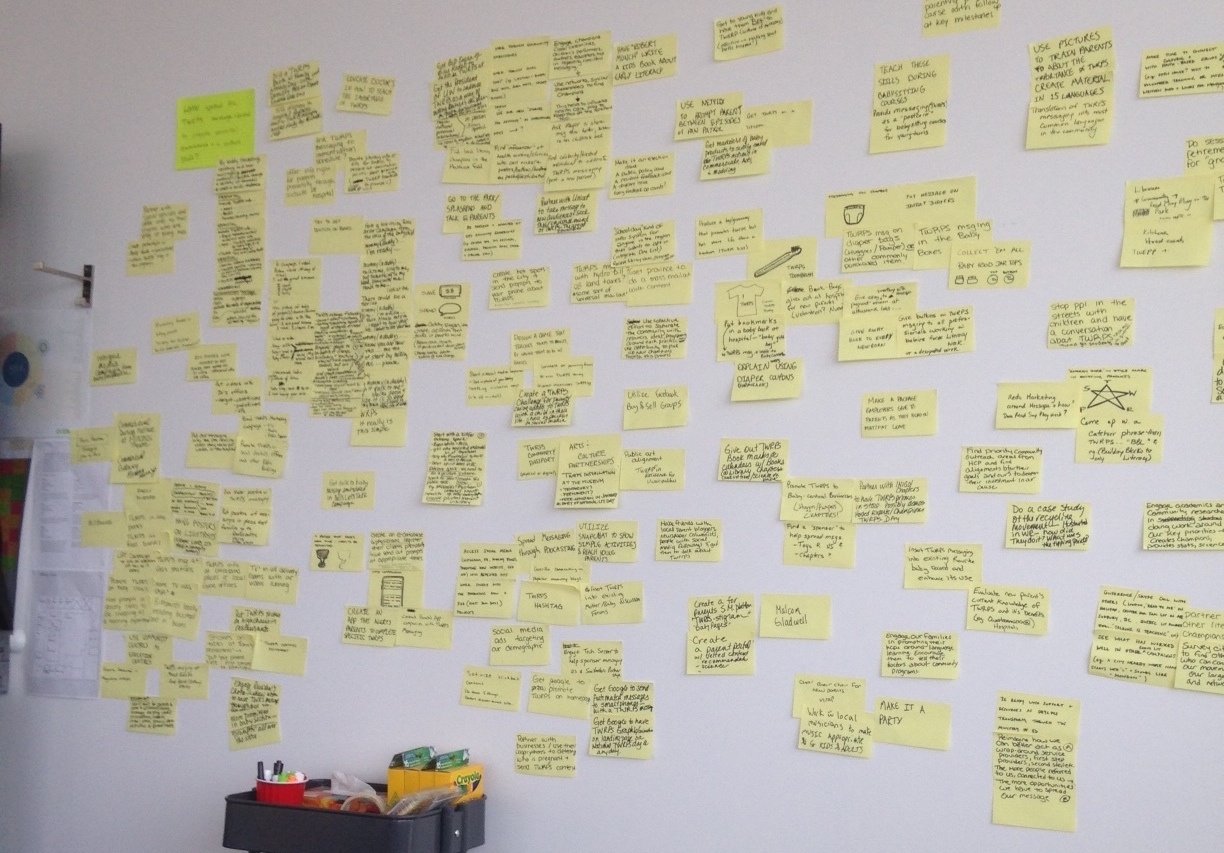Solutions: Unlocking the Power of Creative Thinking
A lot of our time in the world of design and problem-solving is spent dissecting issues, mapping out problem spaces, and diving into the intricate web of stakeholder dynamics. But, as we’ve mentioned before, understanding the problem is just one piece of the puzzle. It’s what we do with that understanding that truly matters. To solve complex problems effectively, we need ideas, lots of them.
Solving big problems is no walk in the park. It’s a challenge that often leaves groups stumped when it comes to generating ideas. In design-based work, we refer to this phase of idea generation as “ideation.” While ideas are easy to come by, what sets the stage for success is what we do with these ideas.
Let’s dig deeper into the art of ideation, a crucial step in the problem-solving process and explore several skills that can help you unleash your creative potential and generate a wealth of ideas to choose from.
Free Association: Unlocking Creativity
Free association is a divergent thinking approach. It begins with a single keyword, idea, or problem.
Start by thinking about that starting point, and let your mind roam freely.
What are the first things that pop into your head related to that keyword?
Explore this mental space and note down everything remotely associated with it.
The beauty of free association is that there are no wrong answers; it’s about generating as many ideas as possible.
Forced Association: Discovering Connections
Forced association, in contrast, is a convergent thinking technique.
Start with a pair of keywords, ideas, or a problem and its potential solution.
Begin by freely associating outward from each starting point, and gradually, you’ll uncover connections between them.
This skill helps you identify relationships and fits between ideas.
Extension and Combination: Building on Ideas
Once you’ve diverged with free association and converged with forced association, it’s time to extend and combine your ideas. Think of them as building blocks or seeds for new concepts. Instead of immediately judging and discarding ideas, ask yourself questions like:
“How might we make this idea bigger?”
“What happens if we try both of these together?”
This phase is about exploring the potential of your generated ideas further.
Mind Mapping: Visualizing the Ideation Process
Mind mapping is a nonlinear, visual note-taking technique that adds a new dimension to your ideation process.
Start with a central theme as your core node
Use arrows to branch out to related nodes, representing sub-themes or new ideas. The interconnected nodes provide a visual representation of your ideation journey.
What’s fascinating about mind mapping is its collaborative potential. In a group setting, it can serve as a collective canvas for generating ideas, making connections, and reviewing what’s happening in real time.
Each of these ideation skills has its unique strengths. Free association encourages outside-the-box thinking, forced association helps you discover connections, extension and combination let you build on your ideas, and mind mapping enables collaborative exploration.
The late Dr. Linda Carson, Professor at the University of Waterloo and Overlapper said, “How do you catch a big fish? Step one, catch a lot of fish. Step two, throw back all the little ones.” Ideation is a numbers game, and these skills allow you to cast a wide net and capture those big, impactful ideas.
As you practice these skills, the prompts and questions will become second nature, guiding your ideation process. These skills, once honed, are invaluable tools in your problem-solving arsenal. They empower you to approach challenges with creativity, efficiency, and a wealth of ideas at your disposal.
Practice Makes Progress
Dive deeper into each of these ideation skills and the power of creative thinking with our customized training courses or through facilitated workshops with our expert creative problem solving facilitators. Get in touch with us!
Stay curious, stay creative, and get ready to usher in a new era of idea-driven problem solving.

